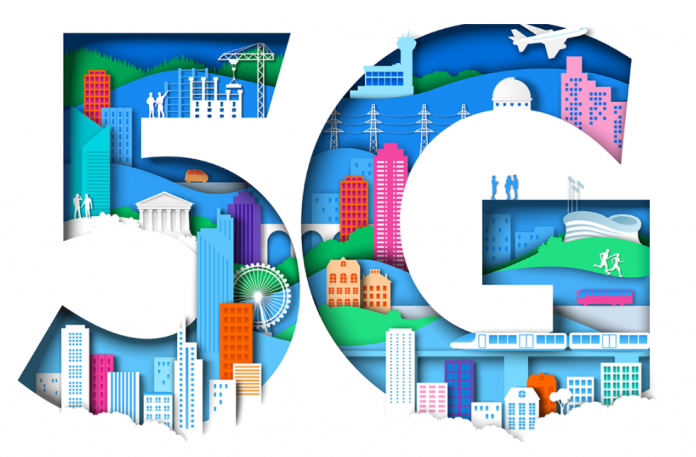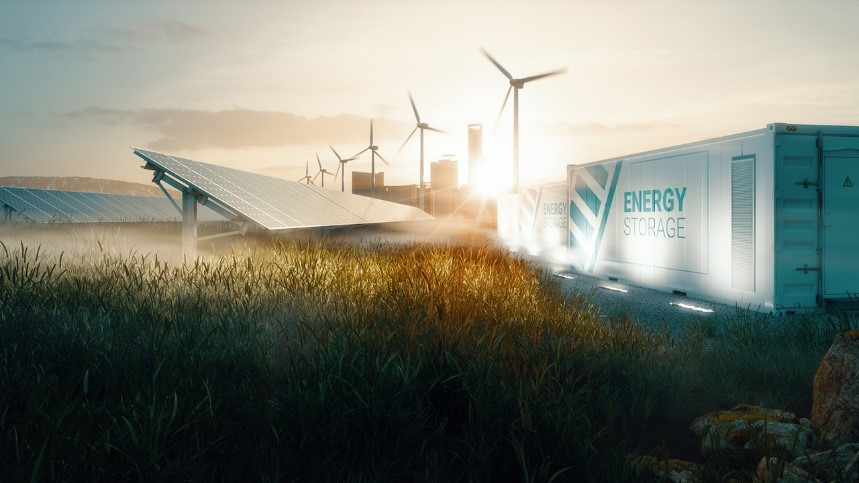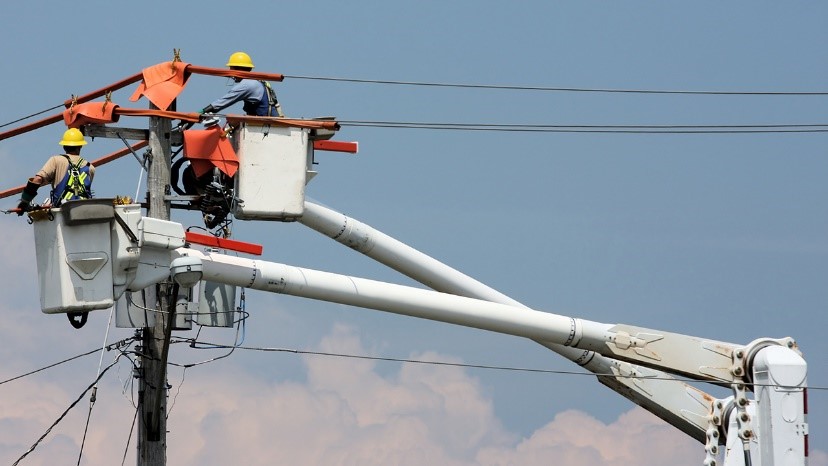As 5G networks roll out, the benefits will be enormous across many different sectors, including energy and resource management. Does that mean 5G will be good for the environment? Certainly there are many potential positive and negative contributing factors when it comes to 5G and carbon emissions. But the worldwide rollout of the next generation of network technology is so complex that no simple equation can sum up the balance sheet on environmental impact.
For the critical cause of environmental stewardship, it will be vital to assess any negative environmental impact of 5G and to mitigate those factors. These efforts include offsetting greenhouse gas emissions with initiatives that reduce carbon, and there are some excellent resources on this topic. For example, an insightful article from the Earth Institute of Columbia University titled, The Coming 5G Revolution: How Will It Affect the Environment, explores not only the potential negatives, but also the important steps to offset them. The efforts cited include decarbonization, more efficient cooling, biodegradable sensors, recycling toxic materials and network sharing.
The focus of this blog post is the potential of 5G to have a positive environmental impact. There is much to learn and study. But a combination of hypothesis, along with some initial research results, points to some exciting and hopeful signs that 5G stands to support efficiencies across many industries that can reduce the use of fossil fuels and the resulting carbon emissions.
Let’s explore how the promise of 5G, including faster speeds and greater throughput, can help support a greener future.
How Can 5G Help the Environment?
Worldwide, efforts are underway to reduce our carbon footprint. Sustainable methodologies, better stewardship of our forests and natural resources, and conversion to solar and other renewable energy sources have been shown to have an enormous positive impact. That said, change is hard, particularly when balancing environmentally sound strategies against growth and development.
Today, the United States is the second largest electricity consumer in the world, after China. And other regions that are seeking to become more mobile and modern are catching up. Growing requirements for vehicles, utilities and refrigeration mean a greater use of natural resources and fossil fuels.
In an ideal world, citizens and corporations would voluntarily reduce their energy requirements and adopt better practices to ensure we can maintain the world as we know it for many generations to come. Yet we know voluntary compliance is hit and miss. When technology comes into play, we can reduce dependence on voluntary efforts and utilize automation and artificial intelligence to reduce energy usage and foster a more sustainable planet.
In some important ways, 5G has the potential to enable a new set of technologies and industry practices that will lead to a greener, more environmentally friendly future.
Network Efficiency and the Reduction of CO2
One exciting probably outcome from the migration from 3G and 4G LTE networks to 5G is the efficiency of transmissions. A research team from the University of Zurich and Empa analyzed the effects of the 5G mobile standard on the emissions of greenhouse gasses, concluding that the greater efficiencies of 5G technology will not only reduce carbon emissions, but will also enable innovative applications in a range of sectors, from smart grid to precision agriculture, thereby helping to reduce CO2 emissions. This migration will occur over the next decade, so that according to the researchers, “the 5G network in 2030 should cause around 85% fewer emissions per unit of data transported than today’s mobile phone network.”
Reduction in Energy Use
It’s likely true that with 5G providing a wider reach, much faster networks, greater bandwidth and reduced latency, the use of electronic devices will increase worldwide, which certainly stands to increase demands for energy. Simultaneously, there are efforts underway worldwide to improve energy efficiency and reduce energy consumption across the grid, through a wide range of efforts, from solar, wind and hydro power to efficiences in how devices and buildings utilize energy in order to reduce our carbon footprint. 5G networks will enable near real-time transfer of data, which will make AI-enabled automation a reality. Better designs, like more efficient motors, and applications that use sophisticated algorithms to optimize the use of resources will enable smart cities and smart buildings to move toward the goal of net zero emissions.
An Atlantic article, titled Can 5G Save the Planet?, describes how international standards for 5G call for reduced energy use compared to 4G networks today, and that can be a game changer for the environment. The goal is to “use less power to transmit more data, decreasing the wattage required for each bit of Internet traffic.”
The article shared several insights into the ways 5G has the potential to reduce environmental impact:
- Today, a single kilowatt hour (kWh) of electricity on a 4G network enables the download of about 300 high-definition movies. With 5G, that same kilowatt hour can power about 5,000 ultra-high definition movie downloads.
- Base station technologycan be massively improved. Innovations in base station design can reduce heat-generation by utilizing fewer parts that need to be cooled, use open air cooling instead of electric-powered cooling methods, use solar and liquid cooling methods, and deploy power management software to dramatically reduce the overall carbon footprint. Some organizations are now reporting an 80% improvement in energy efficiency.
- Sleep modes for devices and networks that are not in operation can dramatically reduce power consumption.
- Artificial intelligence and analytics can optimize the use of resources to reduce energy usage of fants, vents and other mechanical equipment.
Autonomous and Electric Vehicles
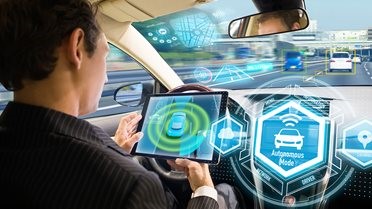 connected vehicle technology, allowing autonomous vehicles to communicate with each and with intersections in order to avoid accidents. This will be especially useful for vehicles driving on congested city streets, where it can be difficult for cars to avoid each other. Given the requirement for split-second AI decision-making on roads and in intersections, 5G communication will be one of the key technologies that make self-driving cars a reality.
connected vehicle technology, allowing autonomous vehicles to communicate with each and with intersections in order to avoid accidents. This will be especially useful for vehicles driving on congested city streets, where it can be difficult for cars to avoid each other. Given the requirement for split-second AI decision-making on roads and in intersections, 5G communication will be one of the key technologies that make self-driving cars a reality.
The 5G future for autonomous vehicles will likely have several wins for the environment:
- The autonomous vehicle future will bring a paradigm shift, in which it’s predicted that fewer people will own a personal vehicle. An article about this shift in computer.org reported on an MIT study predicting that shared, self-driving will take many vehicles off the road —perhapsas many as 80% of them. Ride sharing services will be more popular. That means fewer parking garages, smaller parking lots and fewer cars being manufactured.
- Wear and tear on roadways will be reduced, resulting in far few resources required for infrastructure overhauls like widening and repairing roads.
- Most self-driving cars will be electric, which will dramatically reduce the use of fossil fuels.
- Autonomous vehicles will be programmed to strive for maximum mileage. They’ll also have smaller motors, since acceleration will no longer be such a hot topic when there is no driver doing the accelerating.
Improved Traffic Management and Less Congestion
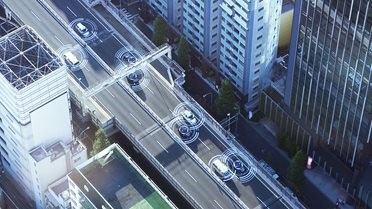 New York City are deploying the technology to support this reality today.
New York City are deploying the technology to support this reality today.
There are several likely positive outcomes, from an environmental perspective:
- Intelligent Transportation Systems (ITS) enable a combination of technologies, including high-performance routers, roadside units (RSUs) and traffic cameras to coordinate traffic routing through a city and perform adaptive traffic lighting control to prevent smog-producing congestion.
- The city smart grid will be able to feed real time data to self-driving cars, so vehicles can avoid congested areas.
- Smart route planning will support optimized drive times, less idling in traffic, and quicker wayfinding for gas stations and other services.
More Efficient Infrastructure
In America, the telecommunications buildout went from the telegraph to landline telephones to cell phones. Compare that to other regions of the world, like many countries in Africa, which went from limited infrastructure straight to cell phones, completely bypassing the landline infrastructure. It’s daunting to consider the amount of resources and fuel that were saved in the buildout of networks that don’t require cable.
There are still about 19 million Americans who don’t have access to broadband Internet. A likely scenario is that these households may never get a broadband connection. Instead of building out broadband infrastructure, it will make a lot more sense to build out 5G infrastructure in rural areas as a next phase after city infrastructure is complete.
One net result of less cable and wire is a reduction in the amount of servicing these networks require to function. Each time a storm takes out power and communications lines or a construction vehicle knocks out wired cable, large gas-powered vehicles must travel to all the affected sites to perform repairs. 5G will see a massive reduction in these kinds of service calls.
5G and the Work from Home Movement:
 make connections for remote workers reliable and secure. Cloud services like Microsoft Teams and Zoom instantly grew in popularity to enable teams to meet remotely, see one another virtually face to face, and get work done.
make connections for remote workers reliable and secure. Cloud services like Microsoft Teams and Zoom instantly grew in popularity to enable teams to meet remotely, see one another virtually face to face, and get work done.
This shift will be temporary for some, permanent for some, and a very likely scenario is that many workers will continue to work some portion of the time from home to reduce long commutes and the cost of commuting. Newsweek reported that Global Workplace Analytics estimates that 25% to 30% of the labor force will work from home multiple days a week by the end of 2021. The coming of 5G will have a direct impact, as many workers will find they can work from anywhere and enjoy optimal Internet connectivity.
Since working from home means less commuting, the phenomenon we observed of fewer cars on the road and less smudgy skies will continue. Another likely scenario is that fewer offices will need to be built, and fewer will need to run at peak capacity with all that entails, from lighting and electricity usage for computers to heating and air conditioning.
Green Tech for Smart Cities and Industries
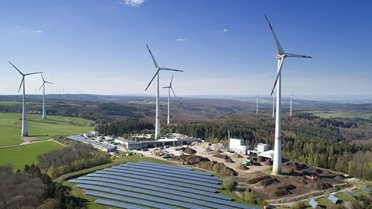 5G is going to be the foundation of the IoT revolution, fueling green technology to support efficiencies and automation in smart cities, smart agriculture and efficiencies in manufacturing, oil and gas, mining and more. Autonomous and electric vehicles are just one aspect of a smart city. In the next few years there will be all sorts of new, Internet-enabled green tech innovations as cities update their infrastructure.
5G is going to be the foundation of the IoT revolution, fueling green technology to support efficiencies and automation in smart cities, smart agriculture and efficiencies in manufacturing, oil and gas, mining and more. Autonomous and electric vehicles are just one aspect of a smart city. In the next few years there will be all sorts of new, Internet-enabled green tech innovations as cities update their infrastructure.
From smart traffic to smart electric grids that more efficiently manage power usage and avoid blackouts, to sensors to support more efficient buildings, city lighting and water management systems, 5G holds a lot of promise. All of this will allow city planners to offer better services to city residents. In general, thanks to 5G’s incredible speed, cities will be better connected and function more effectively than they do now.




